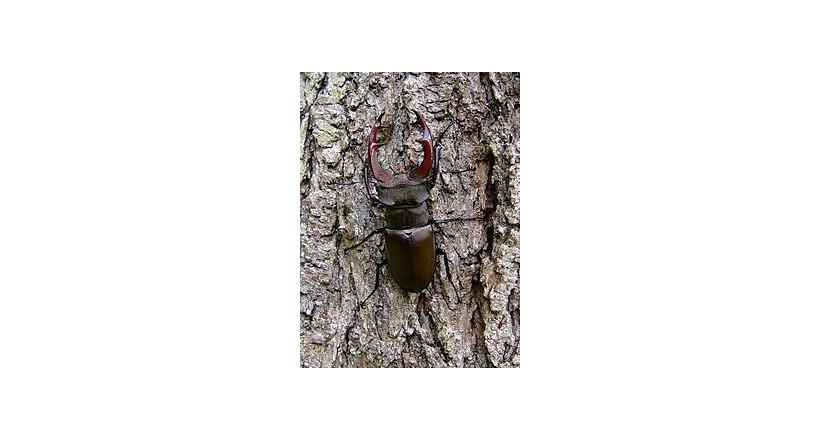Lucanus cervus is the best-known species of stag beetle (family Lucanidae) in Western Europe, and is the eponymous example of the genus. L. cervus is listed as Near Threatened by the IUCN Red ListL. cervus is situated in the genus Lucanus within the family Lucanidae. In the genus there are two subgenera: Lucanus Scopoli, 1763 and Pseudolucanus Hope and Westwood, 1845. The species L. cervus contains four subspecies. The nominate subspecies L. cervus cervus (Linnaeus, 1758) was established via the original description of the species in 1758. The three latterly added subspecies are L. cervus judaicus Planet, 1900, L. cervus laticornis Deyrolle, 1864, and L. cervus turcicus Sturm, 1843. L. cervus akbesianus 1896
Sexually dimorphic, the males have enlarged mandibles and are larger than the females. Although the male's mandibles seem threatening, they are too weak to be harmful. Nevertheless, females can inflict a painful bite. The resemblance of the male's mandibles to the horns of a stag, and their use in combat between males, much like with deer, gives the species its scientific and common names.
Adult size varies between different areas of its distribution, for example beetles from Spain, Germany, and the Netherlands are larger than those from Belgium or the UK





